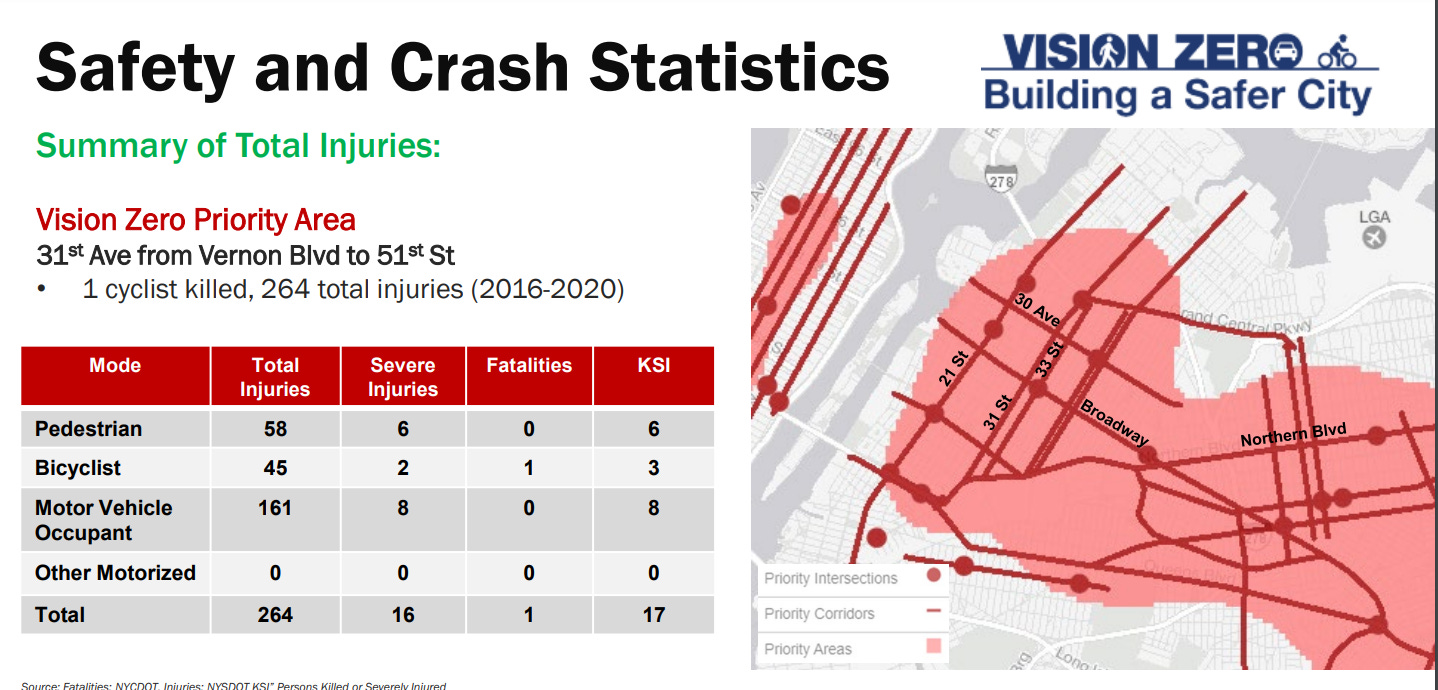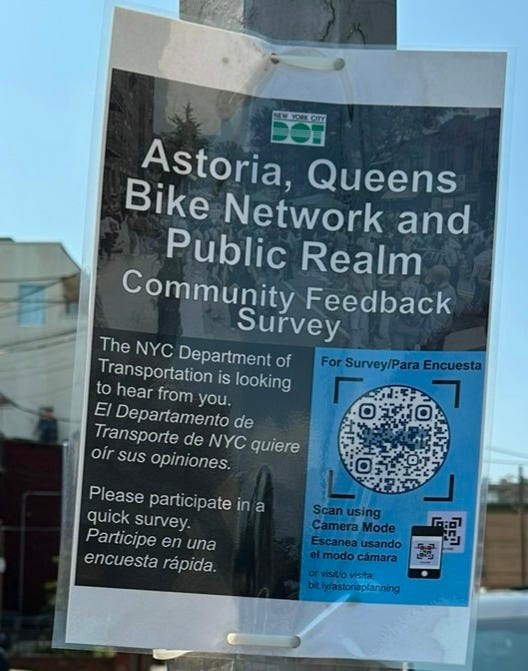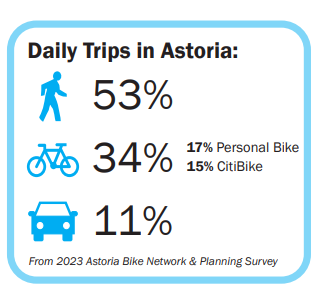Astoria has undergone significant changes in recent years, but its road infrastructure remained outdated—until now. The city has recently begun implementing a plan to install two-way protected bike lanes along 31st Avenue. This initiative will remove a lane for cars and convert the corridor into a one-way street.
What’s a Bike Boulevard?
A bike boulevard prioritizes bicycles over motor vehicles by maintaining low-speed and low-traffic conditions. These boulevards use various techniques to discourage motor vehicles from using the street as a through route while allowing local traffic to pass at reduced speeds. Techniques include signs, pavement markings, and measures for speed and volume management.1
Why Does Astoria Need a Bike Boulevard?
Astoria's outdated road infrastructure has led to numerous injuries and high rates of pedestrian and traffic-related incidents. Vision Zero, a comprehensive road safety initiative aimed at eliminating traffic-related fatalities and severe injuries, has identified Astoria as a priority area.
The people have spoken and they want more protected bike lanes and more pedestrian space. The DOT launched a community survey in 2023 to collect ideas on how to improve the bike network. Over 2000 community members responded, and 76% of them noted that they want more protected bike lanes and 74% said they want more pedestrian space. Many mentioned issues with regards to cars ignoring traffic signals, double parking, lack of protected bike lanes.
As an Astorian, I have noticed that many drivers treat traffic signals as suggestions and double parking seems like a cultural norm. This behavior forces many bikers onto the sidewalks.
The survey also highlighted that most people either walk or bike within Astoria. Also as an Astorian, I don’t drive and mainly get around by walking or public transit.
What Else Did the Process Entail?
Over the past year, the Department of Transportation has actively engaged with the Astoria community through various initiatives. These included an online survey allowing residents to submit ideas for street improvements, five pop-up workshops to gather in-person feedback, and a Q&A session with Queens Community Board 1. A key event was an in-person workshop where over 150 attendees provided feedback on the conceptual design, driven largely by robust online community involvement. This strong turnout reflects the power of digital platforms like Reddit and Facebook in mobilizing local residents to address traffic safety issues. The engagement of groups such as the MicromobilityNYC subreddit highlights the effectiveness of online activism in shaping local infrastructure and enhancing pedestrian and cyclist safety.2
What Does This All Mean?
The city has begun installing the bike boulevard on 1.1 miles of 31st Avenue, creating a safer route for cyclists and pedestrians. The redesign introduces two-way protected bike lanes from Steinway Street to Vernon Boulevard, providing a secure east-west corridor. Sections of the street will be converted to one-way for car traffic, reducing vehicle congestion and improving safety for cyclists and pedestrians.
The DOT has started implementing these changes this summer, with a potential car-free plaza between 33rd and 34th Streets that could further enhance the area. The redesign also includes "shared streets" between 31st and 35th Streets, where cars will move one-way and bikes will move two-way, with some bike paths running against car traffic. The DOT plans to extend the bike boulevard east to 51st Street next year.
Several residents support the project. Despite challenges and pushback on similar projects in the past, local advocates are enthusiastic about the improvements, believing they will create a safer and more community-friendly environment.
What Does This Show About Community Engagement?
Astoria’s bike boulevard shows the real power of community action. Local advocates and engaged residents have turned 31st Avenue into a safe, vibrant corridor for cyclists and pedestrians. This project demonstrates how collective efforts can reshape a neighborhood, creating a model for other areas to follow. Get involved now and help drive change in your community.
https://nacto.org/publication/urban-bikeway-design-guide/bicycle-boulevards
https://nyc.streetsblog.org/2023/10/03/astoria-organizers-lead-the-way-on-street-safety-with-a-reddit-strategy








Great post! I love the online engagement part. Let's tackle environmental review next: Sebastian's reddit post on "How environmental review is strangling New York’s future" got 167 comments on Reddit!😆
https://www.reddit.com/r/nyc/comments/1f6cfo6/how_environmental_review_is_strangling_new_yorks/